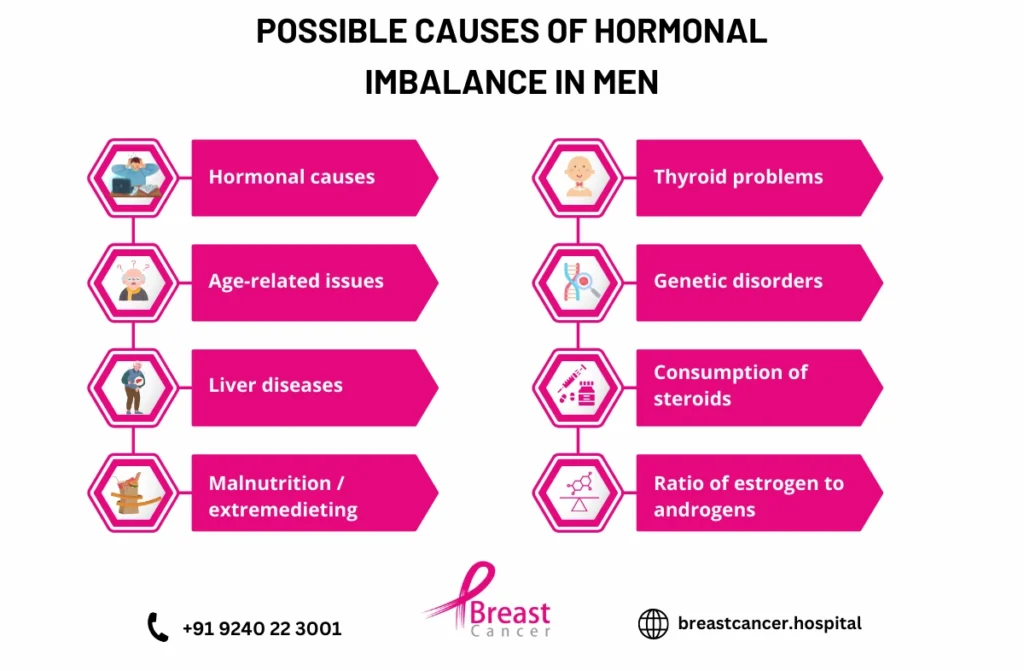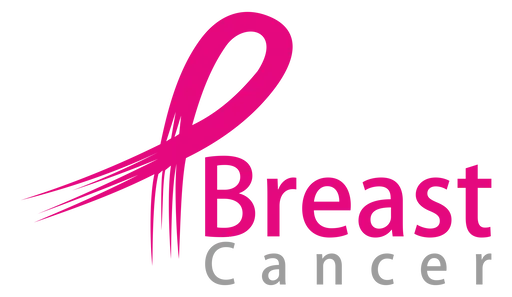Breast enlargement in males, also known as gynecomastia, is a condition that many men experience but rarely talk about due to social stigma. It involves the enlargement of breast tissue in men, which can lead to discomfort and emotional distress. For some, it may also raise concerns about breast cancer, although it’s important to note that this condition is usually benign. Understanding the causes, symptoms, and treatment options for breast enlargement in males is the first step toward managing this condition effectively.
This blog provides a comprehensive guide to breast enlargement in males, covering everything from its causes and symptoms to diagnosis and treatment options. If you or someone you know is dealing with this condition, this guide is designed to answer your questions and provide actionable insights.

What Is Breast Enlargement in Men (Gynecomastia)?
Breast enlargement in men, or gynecomastia, occurs when the breast tissue in males grows larger than usual. This is often due to an imbalance between the male hormone testosterone and the female hormone estrogen. While both hormones are present in men and women, an increase in estrogen or a decrease in testosterone can lead to the development of enlarged breasts in men.
Is It Common?
Yes, gynecomastia is quite common and can occur at different life stages. It often affects newborns, teenagers going through puberty, and older men. While it’s generally harmless, the condition can cause emotional discomfort or self-consciousness, especially if the swelling is visible under clothing.
Can It Indicate a Serious Problem?
In rare cases, breast enlargement in males may signal an underlying health issue, such as liver disease, hormonal disorders, or even breast cancer. Therefore, it’s important to consult a healthcare professional for proper evaluation and diagnosis.
Common Causes of Breast Enlargement in Males
Understanding what causes breast enlargement in males can help you identify and address the issue more effectively. Below are some of the most common causes:
- Hormonal Imbalances: The primary cause of breast enlargement in men is a disruption in the balance between estrogen and testosterone. This can occur naturally during puberty or as part of the aging process.
- Obesity: Excess fat can increase the levels of estrogen in the body, leading to enlarged breasts in men.
- Medications: Certain drugs, including anti-androgens, steroids, and antidepressants, are known to trigger breast swelling in men.
- Health Conditions: Diseases like hyperthyroidism, liver disease, or kidney failure can contribute to hormonal changes, causing gynecomastia.
- Substance Abuse: Alcohol, anabolic steroids, and recreational drugs like marijuana can also result in breast enlargement in males.
Types of Breast Enlargement in Males
There are different types of breast enlargement in males, each with its own characteristics and underlying causes.
- True Gynecomastia: This type involves the growth of actual breast tissue due to hormonal imbalances.
- Pseudo-Gynecomastia: This occurs when fat deposits accumulate in the chest area, often in overweight or obese men.
- Mixed Gynecomastia: A combination of both glandular breast tissue and fat deposition is present in this type.
Understanding the type of breast enlargement in men you’re dealing with can help determine the best treatment approach.
Symptoms of Enlarged Breasts in Men
Enlarged breasts in men may present various symptoms that are noticeable and often uncomfortable. These include:
- A firm or rubbery lump beneath the nipple, which may feel tender.
- Swelling in one or both breasts.
- Tenderness or sensitivity in the chest area.
- Emotional distress or embarrassment due to visible changes in the chest.
While these symptoms are usually benign, it’s crucial to seek medical advice if you notice unusual changes like nipple discharge or severe pain, as these could be signs of a more serious condition, such as breast cancer.
When to Contact a Medical Professional
While mild enlarged breasts in men may not require treatment, medical attention is advised in the following cases:
- Rapid or painful breast enlargement
- Lumps or hard masses in the breast tissue
- Nipple discharge or changes in skin texture
- Gynecomastia caused by medication or underlying conditions
- Psychological distress due to breast enlargement in men
A healthcare professional can diagnose the cause of breast swelling in men and suggest appropriate treatment options.
Diagnosis of Gynecomastia
Diagnosing breast enlargement in males involves a combination of medical evaluations and tests.
- Physical Examination: A doctor will examine your chest to identify the type of swelling and determine whether it’s glandular or fatty tissue.
- Blood Tests: Hormonal tests are often conducted to check for imbalances that might be causing the condition.
- Imaging Tests: Ultrasounds or mammograms may be recommended to rule out the possibility of breast cancer or other abnormalities.
- Medical History: Your healthcare provider may inquire about your medication use, lifestyle habits, and any underlying health conditions.
Early diagnosis can help ensure that you receive the most effective treatment for your specific case of breast enlargement in males.
Treatment Options for Breast Enlargement in Males
The treatment for breast enlargement in males depends on its cause and severity. Below are the common treatment options:
- Lifestyle Changes: For cases caused by obesity, losing weight through a balanced diet and regular exercise can help reduce enlarged breasts in men.
- Medications: Drugs like tamoxifen or aromatase inhibitors may be prescribed to manage hormonal imbalances.
- Surgical Intervention: In severe cases, procedures like liposuction or mastectomy can be performed to remove excess fat or glandular tissue.
- Addressing Underlying Conditions: If a health issue like liver disease or thyroid disorder is causing the condition, treating the root cause often resolves the problem.
It’s important to consult a healthcare provider to determine which treatment option is best suited for your case.
Breast Swelling in Men: Understanding the Basics
Breast swelling in men is often a precursor to gynecomastia and can cause physical discomfort. This swelling may appear as puffiness or tenderness in the chest area.
Causes of Breast Swelling in Men
Several factors contribute to breast swelling in men, including:
- Hormonal Imbalance: An excess of estrogen or a decrease in testosterone can lead to enlarged breasts in men.
- Medications: Drugs such as anti-depressants, anabolic steroids, and chemotherapy drugs can trigger gynecomastia.
- Obesity: Excess fat can increase estrogen production, causing breast swelling in men.
- Chronic Diseases: Liver disease, kidney failure, and thyroid dysfunction may lead to hormonal fluctuations.
- Substance Abuse: Alcohol, marijuana, and certain recreational drugs are linked to breast enlargement in men.
- Aging: Natural hormonal changes in older men may lead to enlarged breasts in men.
Treatment for Breast Swelling
- Apply ice packs to reduce inflammation and swelling.
- Over-the-counter pain relievers can alleviate discomfort.
- Persistent swelling should be evaluated by a healthcare professional to rule out serious conditions like breast cancer.
Psychological Impact of Breast Enlargement in Males
The psychological effects of breast enlargement in males are often overlooked but can be significant. Many men experience embarrassment, anxiety, or low self-esteem due to the visible changes in their chest area.
Coping Strategies
- Open Communication: Talk to trusted friends or family members about your feelings.
- Support Groups: Joining a group of individuals dealing with similar issues can provide emotional support.
- Professional Counseling: A therapist can help you develop coping mechanisms to manage the emotional impact of gynecomastia.
Addressing the emotional aspects of breast enlargement in males is just as important as treating the physical symptoms.
Prevention of Breast Enlargement in Males
While not all cases of breast enlargement in males can be prevented, adopting healthy habits can reduce your risk.
- Maintain a balanced diet and regular exercise to avoid weight gain.
- Avoid substance abuse, including alcohol and recreational drugs.
- Consult a doctor before starting medications known to cause gynecomastia.
- Monitor and manage any underlying health conditions, such as thyroid disorders or liver disease.
Conclusion
Breast enlargement in males is a common yet often misunderstood condition that affects men of all ages. While it’s typically harmless, it can cause significant emotional and physical discomfort. The good news is that with proper diagnosis and treatment, this condition can be effectively managed.
If you notice any symptoms of breast swelling in men or enlarged breasts in men, it’s important to consult a healthcare provider. Early intervention can make a significant difference in both treatment outcomes and emotional well-being.Remember, while breast cancer is rare in men, it’s crucial to remain vigilant and seek medical advice for any unusual changes.




